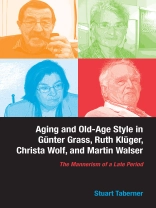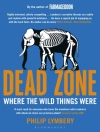Explores the performance of aging in the ‘late style’ of Günter Grass, Ruth Klüger, Christa Wolf, and Martin Walser.
Demographers say that by the year 2060, every seventh person in Germany will be aged eighty or older, and every third person over sixty-five. The prediction for other Western countries is scarcely different. Indeed, the aging society is seen by some as a graver threat than even global warming, with potentially unmanageable tensions relating to intergenerational relationships, work and benefits, and flows of people.
This book explores the representation and performance of aging in recent ‘late-style’ German-language fiction. It situates the authors chosen as case studies — Günter Grass, Ruth Klüger, Christa Wolf, and Martin Walser — in their biographical and social contexts and explores the significance of their aesthetic figuring of aging for debates raging both in Germany and internationally. In particular, the book looks at gender, generations, and trauma and their impact on how writers ‘narrativize’ aging. Finally, it examines the ‘timeliness’ of these different representations and late-style performances of aging in the context of the shift of social, political, and economic power away from the declining societies of the West to the ascendant societies of the East.
Stuart Taberner is Professor of Contemporary German Literature, Culture, and Society at the University of Leeds.
Jadual kandungan
Preface
Acknowledgments
Introduction: Old-Age Societies – Old-Age Style
Old-Age Style and Self-Monumentalization in Günter Grass
Old-Age Style and Self-Healing in Ruth Klüger and Christa Wolf
Old-Age Style and Self-Transcendence in Martin Walser
Conclusion: Old-Age Style as Late Style?
Bibliography
Index
Mengenai Pengarang
STUART TABERNER is Professor of German at the University of Leeds, UK, and Research Associate in the Department of Afrikaans and Dutch, German and French at the University of the Free State, South Africa.












